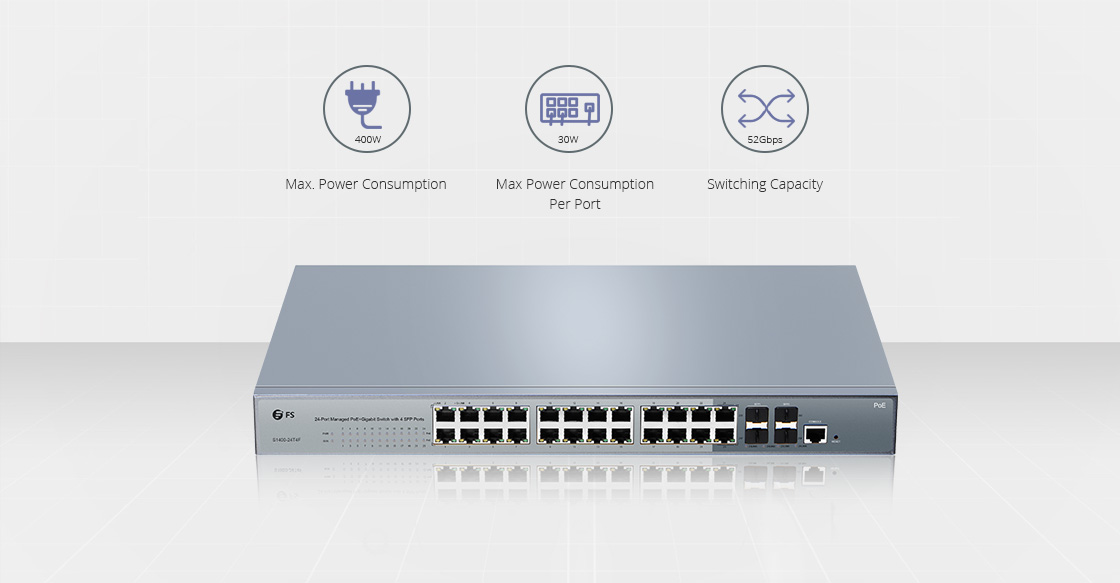Nowadays, almost all enterprise-class switches include two or more SFP (small form-factor pluggable) ports, allowing them to become part of a ring or star-based network topology spread among different buildings, floors or areas, and connected via fiber optic cabling. In many cases, SFP module is also known as GBIC (mini-Gigabit interface converter) modules, as they have replaced the older GBIC transceivers. SFPs can be used and interchanged on a wide variety of products, and they can be either SFP fiber module or SFP copper module.
What Is SFP Fiber Module?
SFP fiber modules are connected by fiber optical cables, which are available with a variety of transmitter and receiver types, allowing users to select the appropriate transceiver for each link to provide the required optical reach over multimode fiber or single-mode fiber.

Optical SFP modules are commonly available in several different categories with different features:
- For multi-mode fiber, with black or beige extraction lever; for single-mode fiber, with blue extraction lever
- SX – 850 nm, for a maximum of 550 m at 1.25 Gb/s (Gigabit Ethernet) or 150m at 4.25 Gb/s (Fibre Channel)
- LX – 1310 nm, for distances up to 10 km
- BX – 1490 nm/1310 nm, Single Fiber Bi-Directional Gigabit SFP Transceivers, paired as BS-U and BS-D for Uplink and Downlink respectively, also for distances up to 10 km
- 1550 nm 40 km (XD), 80 km (ZX), 120 km (EX or EZX)
SFP Fiber Module Datasheet
With a wide application in optical network, many manufactures like Cisco and FS.COM provide a variety SFP modules. These models can be used on a wide variety of network equipment and intermixed in combinations of 1000BASE-T, 1000BASE-SX, 1000BASE-LX/LH, 1000BASE-EX, 1000BASE-ZX, or 1000BASE-BX10-D/U on a port-by-port basis. Part of the main products of Cisco SFP Fiber Modules are listed as below.
| Product | Wavelength (nm) | Fiber Type | Operating Distance (m) | Transmit Power Range (dBm) | Receive Power Range (dBm) |
| 1000BASE-SX | 850 | MMF | 220, 275, 500, 1000 | -3 to -9.5 | 0 to -17 |
| 1000BASE-LX/LH | 1310 | MMF, SMF | 550, 10000 | -3 to -9.5 | -3 to -20 |
| 1000BASE-EX | 1310 | SMF | 40000 | +3 to -1 | +1 to -22 |
| 1000BASE-ZX | 1550 | SMF | Around 70 km | +5 to 0 | -3 to -23 |
| 1000BASE-BX-U | 1310 | SMF | 10000 | 3 to -9 | -3 to -19.5 |
| 1000BASE-BX-D | 1490 | SMF | 10000 | 3 to -9 | -3 to -19.5 |
| GLC-BX40-D-I | 1550 | SMF | 40000 | -5 to +3 | -25 to +3 |
| GLC-BX80-D-I | 1490 | SMF | 80000 | -2 to +3 | -27 to +3 |
| GLC-GE-DR-LX | 1310 | SMF | 10000 | -9.5 to -3 | -25 to +3 |
SFP Fiber Module vs SFP Copper Module
SFP port can be plugged in with both SFP fiber module and SFP copper module. The biggest difference between SFP fiber module and SFP copper module lies in the cabling method. As it has been mentioned before, a SFP fiber module runs on a optical fiber (SMF/MMF). While a copper SFP works on a twisted copper cable (CAT5/CAT5a/cat6). Except for the cabling specification, their transmission distances and connectors are also different.
| SFP Module Type | Cabling Method | Connector | Transmission Distance | Maximum transmission rate |
| SFP Fiber Module | optical fiber | RJ45 | 100m | 1000 Mbps / 1 Gbps |
| SFP Copper Module | twisted copper cable | Duplex LC | Over 100m | 1000 Mbps / 1 Gbps |
Summary
SFP module can connect various network devices such as switch, router, or fiber media converter to a fiber optic or copper networking cable. It is a popular industry format jointly developed and supported by many network component vendors. For SFP fiber module, it can transmit signal over a longer distance than SFP copper module. And the price for SFP fiber module is also cheaper than SFP copper module, so it gains more edges and popularity in the market of SFP modules.
